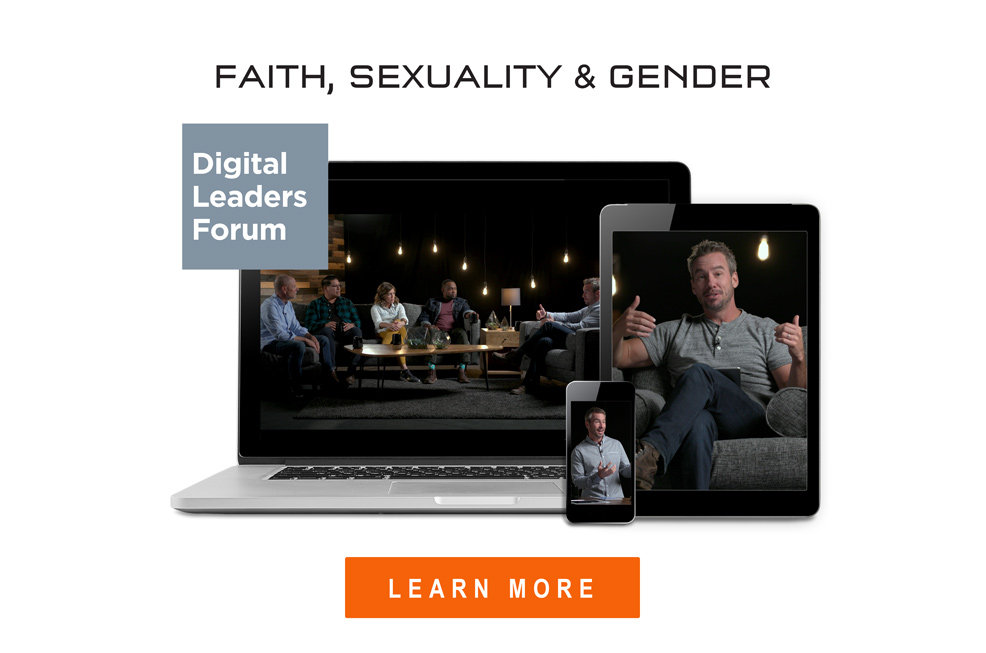
In the previous post, we saw that measuring sexual orientation is much more complicated than people realize. Sexual orientation is, in the words of Rebecca Jordan-Young, a “great example of a ‘commonsense’ concept that seems fairly transparent, but turns out to be complicated and slippery when you try to pin it down.”[i] We now know that the strict “born that way” narrative is, at best, under-supported by scientific evidence. Biology plays a role in shaping one’s predisposition toward, but it doesn’t predetermine, what we call “sexual orientation.” We also know that gay people are having straight sex, and straight people are having gay sex, with much more frequency than many people think. Plus, there’s a lot more methodological complexity and debate surrounding how we even determine whether someone is gay, straight, bisexual, or something else. We ended the previous post by pointing out that the phenomenon of sexual fluidity further complicates our understanding of sexual orientation—a point to which we now turn.
We can thank Dr. Lisa Diamond for her pioneering and ongoing work in the area of sexual fluidity, which continues to disrupt the “commonsense concept” of sexual orientation. In her original study (summarized in her book Sexual Fluidity), Diamond traces the sexual experiences of 100 non-straight females over a period of 10 years: 43% identified as lesbian, 30% as bisexual, 27% said they didn’t fit any category but were non-heterosexual. She also added 11 heterosexual women to this list (p. 58) in order to see how her findings compared to straight women. The average age at the first interview was 20 years old and they came from a diverse set of backgrounds: white, African American, Latina, and Asian American, though most were white.
At the end of her 10-year study, Diamond found that more than 2/3 of the women she interviewed had changed their sexual identity at least once during those 10 years. These changes went in all directions. Some women who first identified as lesbian ended up identifying as bisexual or unlabeled. Some who identified as bisexual or unlabeled now identified as heterosexual. The “unlabeled” identity became the most popular among women in Diamond’s study, largely because of the unexpected fluidity in attractions they experienced over the 10-year study. Many women said that their ongoing experience with sexual fluidity didn’t fit the rigid categories presented to them: bisexual, heterosexual, or homosexual (this was the language they used). They may have experienced seasons where their attractions felt more fixed, but then environmental changes (e.g. new relationships which stirred up unpredictable feelings) caused unexpected attractions to spring up. Some attractions were deeply emotional but not necessarily physical, others were both. Some began as emotional and led to physical intimacy, or vice versa.
Available now from The Center!
The most comprehensive course on faith, sexuality, and gender
Even though 43% of the women identified as lesbian at the beginning of her study (p. 56), only 3% expressed 100% attractions to other women in every interview during the 10-year period (p. 146) and only 17 reported 100% same-sex attraction at any point in the 10-year study (p. 106). Also, 60% of those identified as lesbian in the first interview ended up having some sexual contact with men after they identified as lesbian; 40% within the first 2 years of the first interview (p. 109). Of those who continued to identify as lesbian over the entire 10-year period, 50% had some sexual contact with men during the same period (p. 110). Many lesbian women didn’t find this to be inconsistent with their basic same-sex orientation since they felt that “the most important component of their lesbian identity was their emotional connection with women” (p. 113).
In summary, most women Diamond interviewed experienced ongoing and unpredictable fluidity in their sexual attractions over the 10-year period. “[T]hey acknowledged that once in a while they encountered individuals who sparked unexpected desires” (p. 88). Diamond says that “this is perfectly consistent with the notion that women possess generalized orientations in concert with a capacity for fluidity” (p. 88). “Even lesbians who were nearly exclusively attracted to women pursued periodic other-sex sexual contact as the years went by” (p. 89). In fact, Diamond’s study reported that 30% of the women who identified as lesbian at the beginning of her study ended up pursuing full-blown romantic relationship with men (not just one-off sexual encounters) (p. 113). But, according to Diamond, this does not mean that they changed their orientation:
One important conclusion is that though women do, in fact, experience transformations in their sexual feelings, often brought about by specific relationships, these changes do not appear to involve large-scale ‘switches’ in their overall sexual orientation. Rather, their sexual and emotional attractions typically fluctuate only within a general range. This may mean that the overall range of a person’s potential attractions is set by her orientation, but her degree of fluidity determines exactly where she will end up within that range (p. 160-161, emphasis mine).
Therefore, Diamond never argues that one’s orientation shifts and changes; she argues that there is fluidity within the broader category of orientation. Put differently, a woman could be generally attracted to other women and yet genuinely fall in love with, and become sexually attracted to, a man—while still being attracted to women categorically. Diamond doesn’t want to ditch the concept of orientation altogether, but her research does show that the categories of orientation are much less rigid than people think. So, we shouldn’t take the phenomenon of sexual fluidity as evidence for the possibility of orientation change, even though some have taken Diamond’s research in this direction. (Diamond has responded quite pointedly to this distortion.) “Sexual fluidity” does not “mean that sexual orientation can be changed…It simply means that a woman’s sexual orientation is not the only factor determining her attractions” (p. 10-11).
In short, a woman’s sexual and romantic desires are not the by-product of some predetermined, etched-in-stone, essentialist category of “orientation,” but the messy, unpredictable, sometimes stable sometimes quite fluid, experiences of what it means to be human.
But what about men? Diamond used to assume that male sexuality is much less fluid than female sexuality. However, she has more recently conducted research on male sexuality and summed up her findings in an aptly titled presentation: “I Was Wrong! Men’s Sexuality Is Pretty Darn Fluid Too.”[ii] This bold declaration is based on another study she conducted with over 1,000 participates both gay and straight. In it, she found a rather high percentage of fluidity—even among men. For instance:
- 26% of lesbians reported wanting to have sex with a man in the previous year, and 9% of them did.
- 20% of gay men reported the same desire (to have sex with a woman), and 12% of them did.
- 48% of lesbians reported some degree of attraction to men in the previous year.
- 40% of gay men reported some degree of attraction to women in the previous year.
You may think that this was simply sexual and didn’t include love and romance—the true ingredients of sexual orientation. But the percentages didn’t fluctuate when they were asked deeper questions about love and romance:
- 15% of lesbians developed romantic feelings for men in the previous year
- 31% of gay men developed romantic feelings for women in the previous year.
And what about those who identified as straight?
- 50% of women and 25% of men—all identifying as straight—reported some level of same-sex attraction in this year
- 35% of straight women and 24% of straight men reported masturbating to same-sex fantasy in this year
- 2% of straight women and 9% of straight men engaged in same-sex behavior in this year.
Diamond’s work on sexual fluidity has been widely accepted by many researchers in the field, who, according to their own work have come to very similar conclusions. Dr. Eric Anderson,[iii] Steven Zeeland,[iv] Dr. Ritch Savin-Williams,[v] Dr. Jane Ward,[vi] and others have all shown that it’s not uncommon for people to experience sexual desires outside the rigid confines of their orientation.
The binary categories of gay or straight aren’t as walled off from each other as many people think, and adding a third category of bisexuality doesn’t really help us keep things so neat and clean. Popular and scientific views on bisexuality range from it doesn’t exist, to everyone is bisexual, to everything in between.[vii] We still run into the same problems of categorization—if a straight-identified woman makes out with another woman at a party and she enjoys it, does this mean she’s bisexual? Or gay? Or just a woman who enjoyed making out with another woman? Perhaps the first two options are searching too hard to determine which orientation box the woman fits into, while the last one yawns at what it means to be human. Likewise, some (many? Most?) lesbian-identified women, who are genuinely attracted to other women, are quite capable of falling in love with a man (not every man, or even most men, just a man) and this doesn’t necessarily mean they’re bisexual or not really attracted to women. It might just mean that a woman happened to fall in love with a man.
In my third and final post, I will explore some implications that a more scientific understanding of sexual orientation might have for the church as it reflects on its sexual ethic.
[i] Jordan-Young, Brainstorm, 148.
[ii] This paper was presented at The Society for Personality and Social Psychology preconference in Austin, TX, in January 2014. As far as I can tell, it’s never been published. However, she discusses her conclusions a month earlier in a presentation at Cornell University, which can be viewed here: https://www.youtube.com/watch?v=m2rTHDOuUBw
[iii] Eric Anderson, “‘Being Masculine Is Not about Who You Sleep With…’: Heterosexual Athletes Contesting Masculinity and the One-Time Rule of Homosexuality,” Sex Roles: A Journal of Research 58 (2008): 104-115.
[iv] Steven Zeeland, Sailors and Sexual Identity. Zeeland himself does not identify as gay, though he his sexual attractions “are almost exclusively” toward “active-duty or former U.S. military men” and he believes that “sexual identity is a joke” (http://stevenzeeland.com/?page_id=47).
[v] Ritch Savin-Williams, Mostly Straight.
[vi] Jane Ward, Not Gay.
[vii] For a summary of recent studies and scientific perspectives, see J. Michael Bailey, et al. “Sexual Orientation, Controversy, and Science,” Association for Psychological Science 17 (2016), 59-61.

